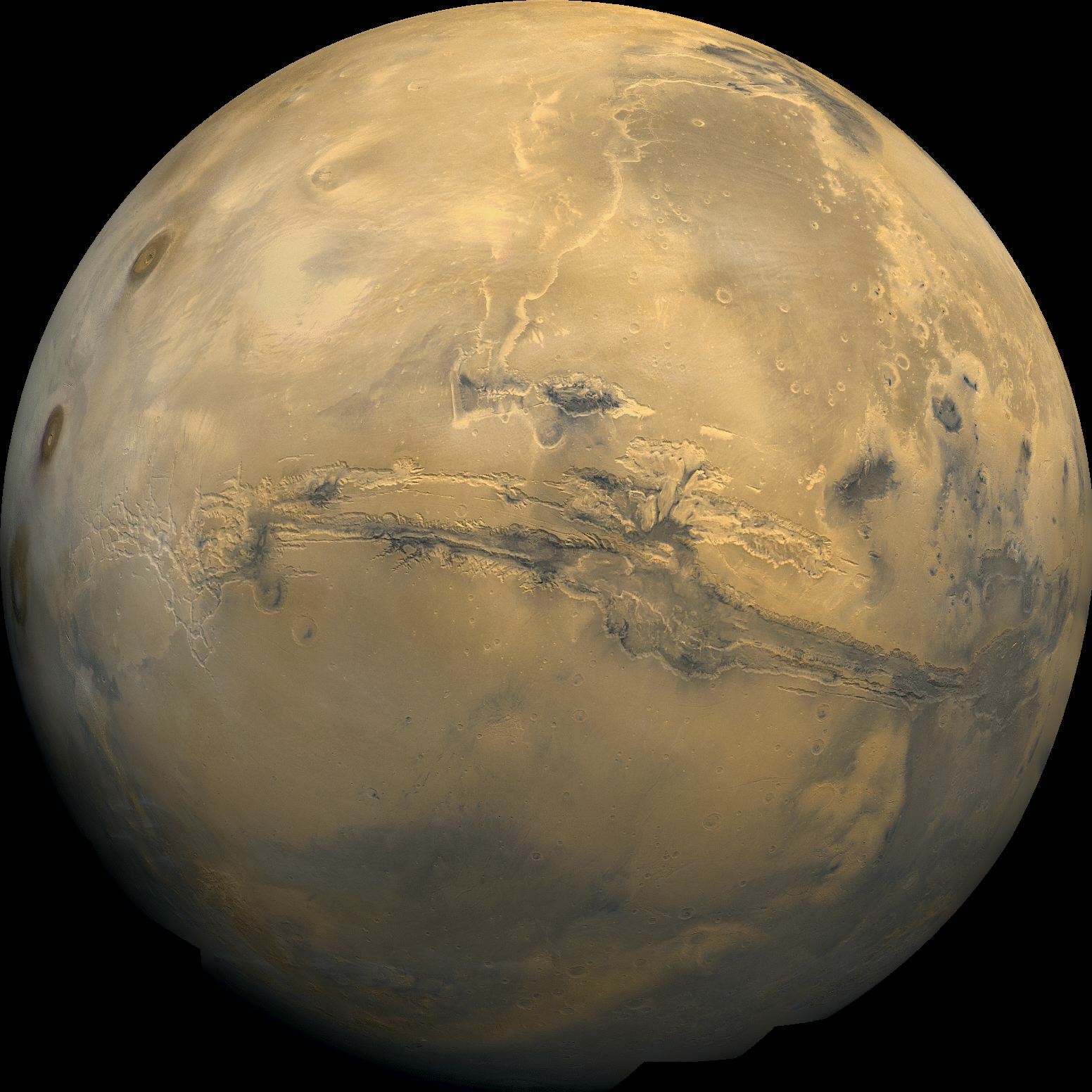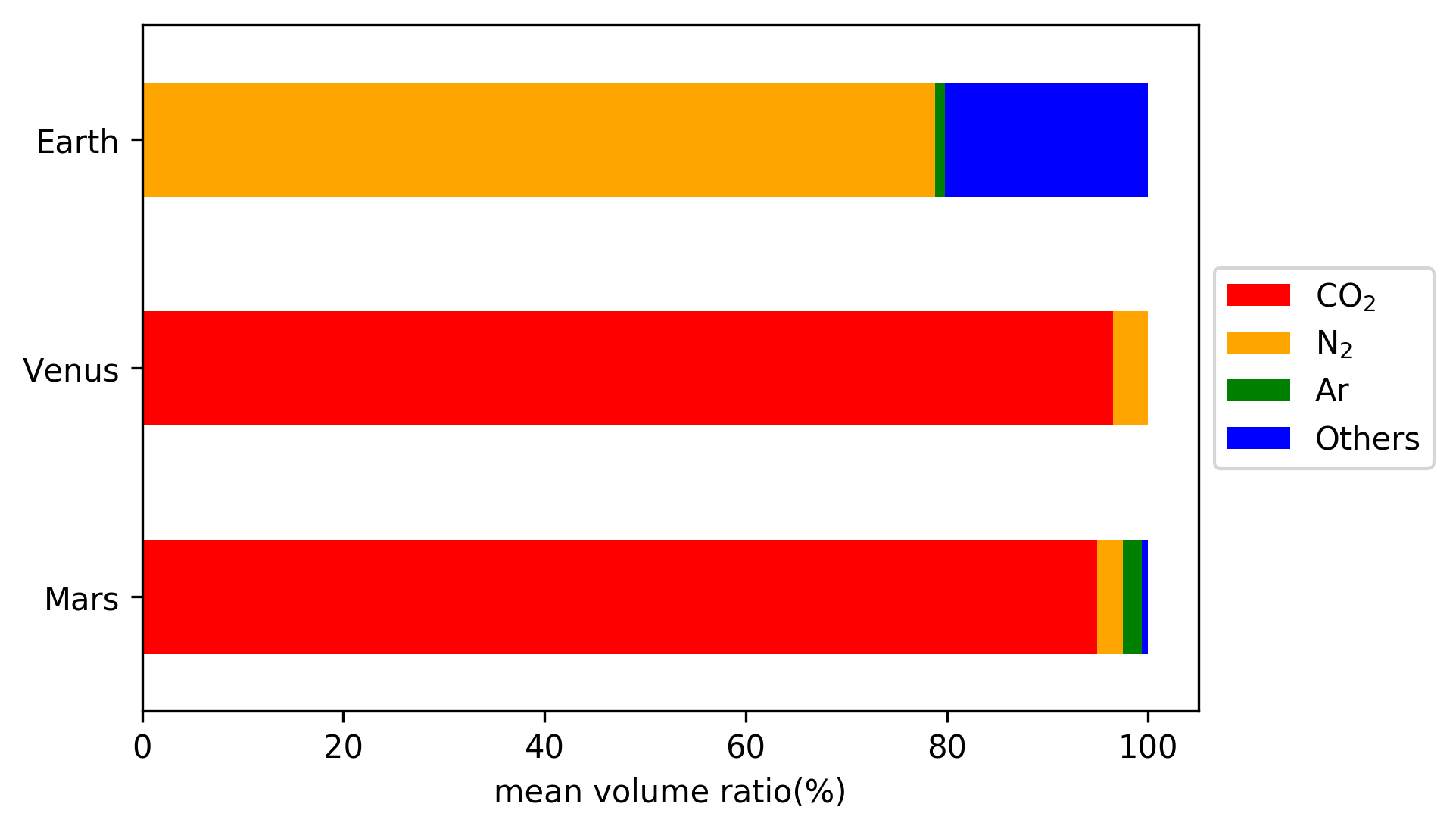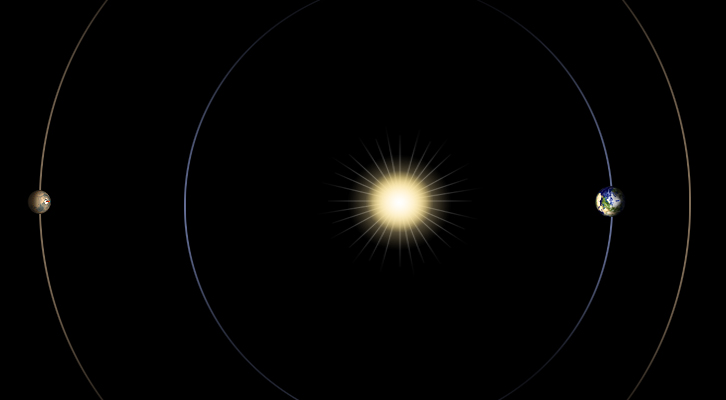|
Viking 1
''Viking 1'' was the first of two spacecraft, along with ''Viking 2'', each consisting of an orbiter and a lander, sent to Mars as part of NASA's Viking program. The lander touched down on Mars on July 20, 1976, the first successful Mars lander in history. ''Viking 1'' operated on Mars for days (over 6 years) or Martian solar days, the longest Mars surface mission until the record was broken by the ''Opportunity'' rover on May 19, 2010. Mission Following launch using a Titan/Centaur launch vehicle on August 20, 1975, and an 11-month cruise to Mars, the orbiter began returning global images of Mars about five days before orbit insertion. The ''Viking 1'' Orbiter was inserted into Mars orbit on June 19, 1976, and trimmed to a 1,513 x 33,000 km, 24.66 h site certification orbit on June 21. Landing on Mars was planned for July 4, 1976, the United States Bicentennial, but imaging of the primary landing site showed it was too rough for a safe landing. The landing was del ... [...More Info...] [...Related Items...] OR: [Wikipedia] [Google] [Baidu] |
Viking Program
The ''Viking'' program consisted of a pair of identical American space probes, ''Viking 1'' and ''Viking 2'', which landed on Mars in 1976. Each spacecraft was composed of two main parts: an orbiter designed to photograph the surface of Mars from orbit, and a lander designed to study the planet from the surface. The orbiters also served as communication relays for the landers once they touched down. The Viking program grew from NASA's earlier, even more ambitious, Voyager Mars program, which was not related to the successful Voyager deep space probes of the late 1970s. ''Viking 1'' was launched on August 20, 1975, and the second craft, ''Viking 2'', was launched on September 9, 1975, both riding atop Titan IIIE rockets with Centaur upper stages. ''Viking 1'' entered Mars orbit on June 19, 1976, with ''Viking 2'' following on August 7. After orbiting Mars for more than a month and returning images used for landing site selection, the orbiters and landers detached; the lander ... [...More Info...] [...Related Items...] OR: [Wikipedia] [Google] [Baidu] |
NASA
The National Aeronautics and Space Administration (NASA ) is an independent agency of the US federal government responsible for the civil space program, aeronautics research, and space research. NASA was established in 1958, succeeding the National Advisory Committee for Aeronautics (NACA), to give the U.S. space development effort a distinctly civilian orientation, emphasizing peaceful applications in space science. NASA has since led most American space exploration, including Project Mercury, Project Gemini, the 1968-1972 Apollo Moon landing missions, the Skylab space station, and the Space Shuttle. NASA supports the International Space Station and oversees the development of the Orion spacecraft and the Space Launch System for the crewed lunar Artemis program, Commercial Crew spacecraft, and the planned Lunar Gateway space station. The agency is also responsible for the Launch Services Program, which provides oversight of launch operations and countdown management f ... [...More Info...] [...Related Items...] OR: [Wikipedia] [Google] [Baidu] |
United States Bicentennial
The United States Bicentennial was a series of celebrations and observances during the mid-1970s that paid tribute to historical events leading up to the creation of the United States of America as an independent republic. It was a central event in the memory of the American Revolution. The Bicentennial culminated on Sunday, July 4, 1976, with the 200th anniversary of the adoption of the Declaration of Independence by the Founding Father delegates of the Second Continental Congress. Background The nation had always commemorated the Founding as a gesture of patriotism and sometimes as an argument in political battles. Historian Jonathan Crider points out that in the 1850s, editors and orators both North and South claimed their region was the true custodian of the legacy of 1776, as they used the Revolution symbolically in their rhetoric. The plans for the Bicentennial began when Congress created the American Revolution Bicentennial Commission on July 4, 1966. Initially, the Bicen ... [...More Info...] [...Related Items...] OR: [Wikipedia] [Google] [Baidu] |
Mass Spectrometer
Mass spectrometry (MS) is an analytical technique that is used to measure the mass-to-charge ratio of ions. The results are presented as a ''mass spectrum'', a plot of intensity as a function of the mass-to-charge ratio. Mass spectrometry is used in many different fields and is applied to pure samples as well as complex mixtures. A mass spectrum is a type of plot of the ion signal as a function of the mass-to-charge ratio. These spectra are used to determine the elemental or isotopic signature of a sample, the masses of particles and of molecules, and to elucidate the chemical identity or structure of molecules and other chemical compounds. In a typical MS procedure, a sample, which may be solid, liquid, or gaseous, is ionized, for example by bombarding it with a beam of electrons. This may cause some of the sample's molecules to break up into positively charged fragments or simply become positively charged without fragmenting. These ions (fragments) are then separated according ... [...More Info...] [...Related Items...] OR: [Wikipedia] [Google] [Baidu] |
Atmosphere Of Mars
The atmosphere of Mars is the layer of gases surrounding Mars. It is primarily composed of carbon dioxide (95%), molecular nitrogen (2.8%), and argon (2%). It also contains trace levels of water vapor, oxygen, carbon monoxide, hydrogen, and noble gases. The atmosphere of Mars is much thinner than Earth's. The average surface pressure is only about which is less than 1% of the Earth's value. The currently thin Martian atmosphere prohibits the existence of liquid water on the surface of Mars, but many studies suggest that the Martian atmosphere was much thicker in the past. The higher density during spring and fall is reduced by 25% during the winter when carbon dioxide partly freezes at the pole caps. The highest atmospheric density on Mars is equal to the density found above the Earth's surface and is ≈0.020 kg/m3. The atmosphere of Mars has been losing mass to space since the planet's core slowed down, and the leakage of gases still continues today. The atmosphere ... [...More Info...] [...Related Items...] OR: [Wikipedia] [Google] [Baidu] |
Heat Shield
In thermodynamics, heat is defined as the form of energy crossing the boundary of a thermodynamic system by virtue of a temperature difference across the boundary. A thermodynamic system does not ''contain'' heat. Nevertheless, the term is also often used to refer to the thermal energy contained in a system as a component of its internal energy and that is reflected in the temperature of the system. For both uses of the term, heat is a form of energy. An example of formal vs. informal usage may be obtained from the right-hand photo, in which the metal bar is "conducting heat" from its hot end to its cold end, but if the metal bar is considered a thermodynamic system, then the energy flowing within the metal bar is called internal energy, not heat. The hot metal bar is also transferring heat to its surroundings, a correct statement for both the strict and loose meanings of ''heat''. Another example of informal usage is the term '' heat content'', used despite the fact that p ... [...More Info...] [...Related Items...] OR: [Wikipedia] [Google] [Baidu] |
Aeroshell
An aeroshell is a rigid heat-shielded shell that helps decelerate and protects a spacecraft vehicle from pressure, heat, and possible debris created by drag during atmospheric entry (see blunt body theory). Its main components consist of a heat shield (the forebody) and a back shell. The heat shield absorbs heat caused by air compression in front of the spacecraft during its atmospheric entry. The back shell carries the load being delivered, along with important components such as a parachute, rocket engines, and monitoring electronics like an inertial measurement unit that monitors the orientation of the shell during parachute-slowed descent. Its purpose is used during the EDL, or Entry, Descent, and Landing, process of a spacecraft's flight. First, the aeroshell decelerates the spacecraft as it penetrates the planet's atmosphere and must necessarily dissipate the kinetic energy of the very high orbital speed. The heat shield absorbs some of this energy while much is also d ... [...More Info...] [...Related Items...] OR: [Wikipedia] [Google] [Baidu] |
Viking Aeroshell - GPN-2000-001903
Vikings ; non, víkingr is the modern name given to seafaring people originally from Scandinavia (present-day Denmark, Norway and Sweden), who from the late 8th to the late 11th centuries raided, pirated, traded and settled throughout parts of Europe.Roesdahl, pp. 9–22. They also voyaged as far as the Mediterranean, North Africa, Volga Bulgaria, the Middle East, and North America. In some of the countries they raided and settled in, this period is popularly known as the Viking Age, and the term "Viking" also commonly includes the inhabitants of the Scandinavian homelands as a collective whole. The Vikings had a profound impact on the early medieval history of Scandinavia, the British Isles, France, Estonia, and Kievan Rus'. Expert sailors and navigators aboard their characteristic longships, Vikings established Norse settlements and governments in the British Isles, the Faroe Islands, Iceland, Greenland, Normandy, and the Baltic coast, as well as alon ... [...More Info...] [...Related Items...] OR: [Wikipedia] [Google] [Baidu] |
Attitude Control
Attitude control is the process of controlling the orientation of an aerospace vehicle with respect to an inertial frame of reference or another entity such as the celestial sphere, certain fields, and nearby objects, etc. Controlling vehicle attitude requires sensors to measure vehicle orientation, actuators to apply the torques needed to orient the vehicle to a desired attitude, and algorithms to command the actuators based on (1) sensor measurements of the current attitude and (2) specification of a desired attitude. The integrated field that studies the combination of sensors, actuators and algorithms is called guidance, navigation and control (GNC). Aircraft attitude control An aircraft's attitude is stabilized in three directions: ''Yaw (rotation), yaw'', nose left or right about an axis running up and down; ''pitch'', nose up or down about an axis running from wing to wing; and ''roll'', rotation about an axis running from nose to tail. Elevator (aeronautics), Elevat ... [...More Info...] [...Related Items...] OR: [Wikipedia] [Google] [Baidu] |
Apsis
An apsis (; ) is the farthest or nearest point in the orbit of a planetary body about its primary body. For example, the apsides of the Earth are called the aphelion and perihelion. General description There are two apsides in any elliptic orbit. The name for each apsis is created from the prefixes ''ap-'', ''apo-'' (), or ''peri-'' (), each referring to the farthest and closest point to the primary body the affixing necessary suffix that describes the primary body in the orbit. In this case, the suffix for Earth is ''-gee'', so the apsides' names are ''apogee'' and ''perigee''. For the Sun, its suffix is ''-helion'', so the names are ''aphelion'' and ''perihelion''. According to Newton's laws of motion, all periodic orbits are ellipses. The barycenter of the two bodies may lie well within the bigger body—e.g., the Earth–Moon barycenter is about 75% of the way from Earth's center to its surface. If, compared to the larger mass, the smaller mass is negligible (e.g., f ... [...More Info...] [...Related Items...] OR: [Wikipedia] [Google] [Baidu] |
Phobos (moon)
Phobos (; astronomical naming conventions, systematic designation: ) is the innermost and larger of the two moons of Mars, natural satellites of Mars, the other being Deimos (moon), Deimos. The two moons were discovered in 1877 by American astronomer Asaph Hall. It is named after Phobos (mythology), Phobos, the Greek mythology, Greek god of fear and panic, who is the son of Ares (Mars) and twin brother of Deimos (deity), Deimos. Phobos is a small, irregularly shaped object with a mean radius of . Phobos orbits from the Martian surface, closer to its Primary (astronomy), primary body than any other known Natural satellite, planetary moon. It is so close that it orbits Mars much faster than Mars rotates, and completes an orbit in just 7 hours and 39 minutes. As a result, from the surface of Mars it appears to rise in the west, move across the sky in 4 hours and 15 minutes or less, and set in the east, twice each Mars sol, Martian day. Phobos is one of the least reflective bodie ... [...More Info...] [...Related Items...] OR: [Wikipedia] [Google] [Baidu] |
Solar Conjunction
Solar conjunction generally occurs when a planet or other Solar System object is on the opposite side of the Sun from the Earth. From an Earth reference, the Sun will pass between the Earth and the object. Communication with any spacecraft in solar conjunction will be severely limited due to the Sun's interference on radio transmissions from the spacecraft. The term can also refer to the passage of the line of sight to an interior planet (Mercury or Venus) or comet being very close to the solar disk. If the planet passes directly in front of the Sun, a solar transit occurs. Spacecraft-related issues There is also a risk that an antenna equipped with auto-tracking will begin following the Sun's movements instead of the satellite once they are no longer inline with each other. This is because the Sun acts as a large electromagnetic noise generator which creates a signal much stronger than the satellite's tracking signal. One example of limitations caused by the solar conjunction o ... [...More Info...] [...Related Items...] OR: [Wikipedia] [Google] [Baidu] |



.jpg)



.png)

